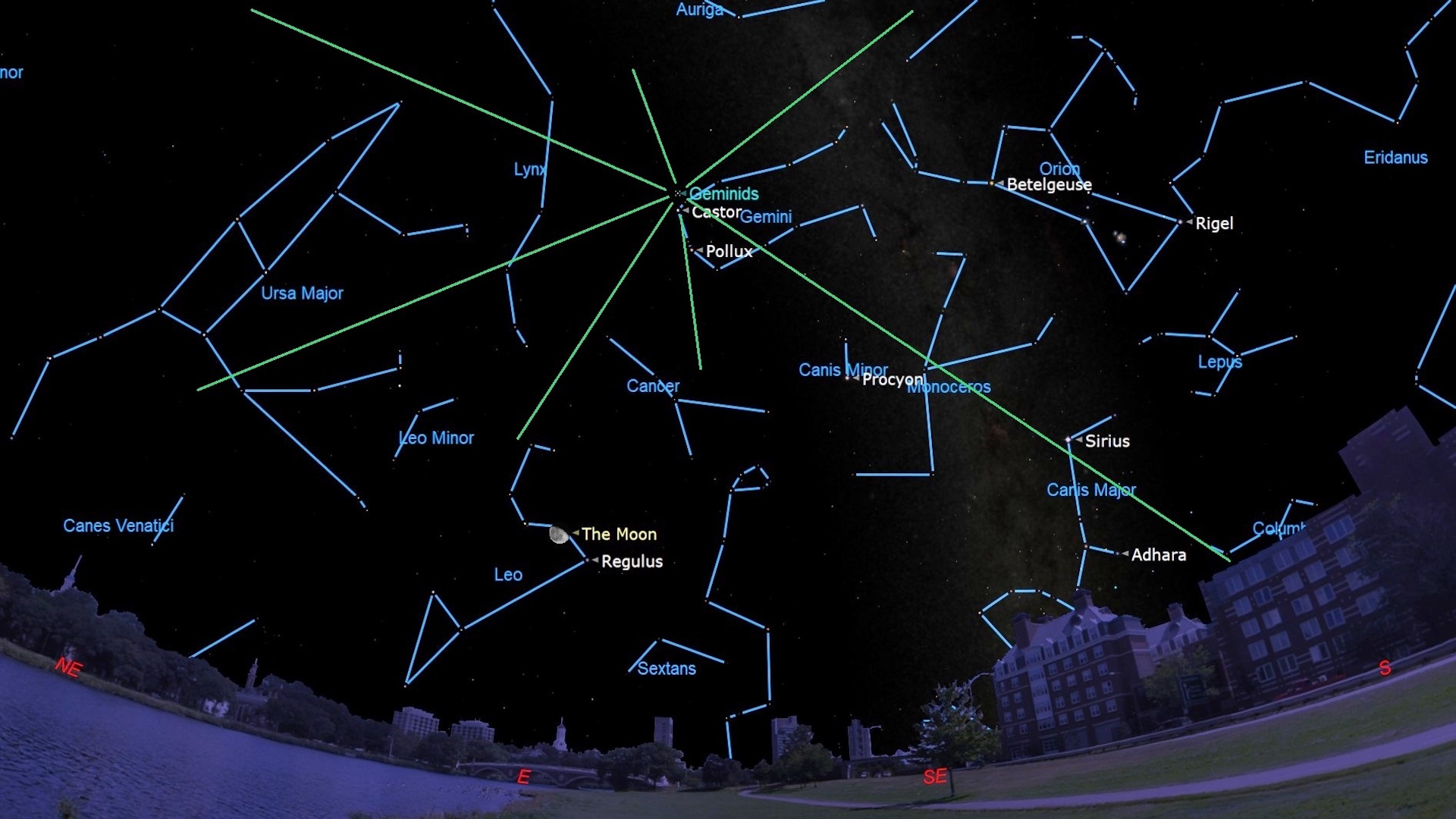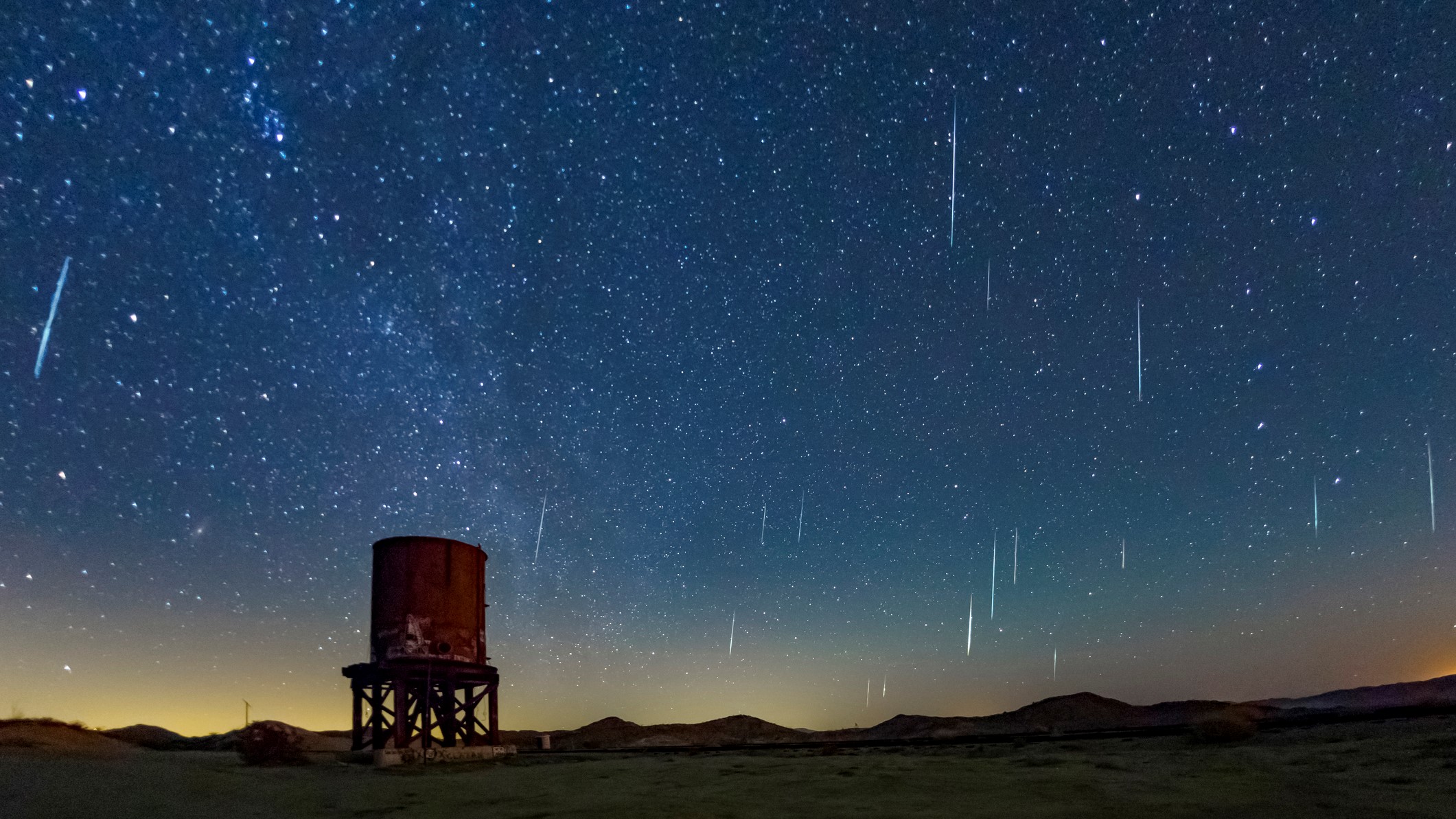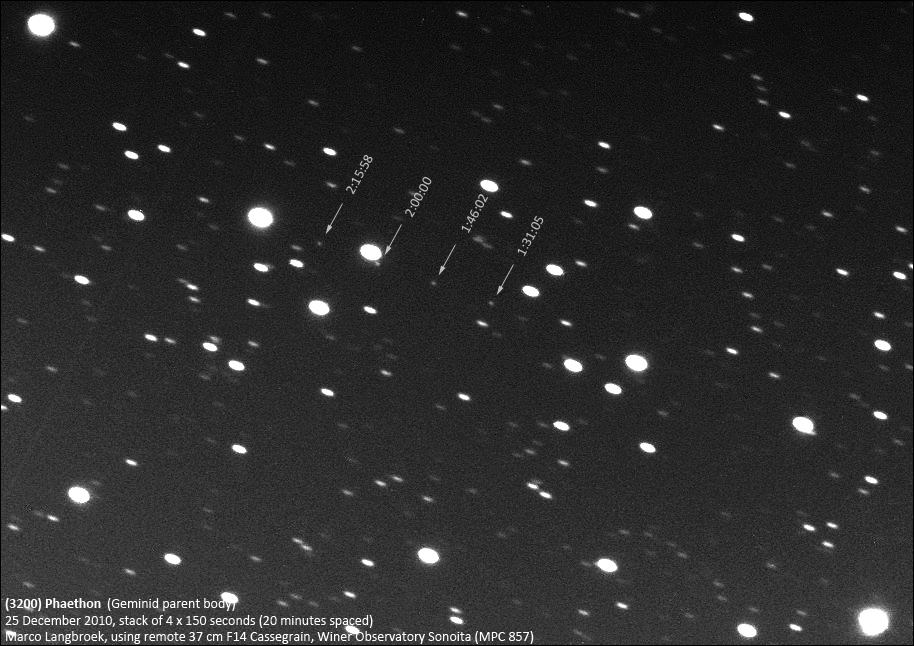See the Geminid meteor shower light up the night sky this week on Dec. 14
The Geminids are considered one of the best meteor showers each year.

The annual Geminids meteor shower reaches its peak on Wednesday (Dec. 14).
The peak of the Geminid meteor shower offers skywatchers the opportunity to view what is regarded as the most consistent and reliable meteor shower of the year while at its best — as long as they are willing to brave the frigid weather of mid-December.
Over New York City the Geminids peak at 8:00 am EST (1300 GMT) on Wednesday (Dec. 15). As a result, the best displays should be seen in the pre-dawn hours on this day, according to In the Sky.
Related: Meteor showers 2022: Where, when and how to see them
This year the Geminids have been active since Dec. 4, and will end on Dec. 17. During this period, the best way to see plenty of meteors is to view the sky when the viewing location is pointed towards the shower's radiant point, found in the constellation of Gemini.
More meteors from the Geminids shower will be seen when its radiant point is above the horizon, with the number of meteors increasing as this point rises higher in the sky. For astronomers in New York City, the Geminids will become visible at around 5:32 p.m. EST (2232 GMT) each night when the radiant point rises above the horizon and the radiant point will be at its highest at around 2:00 a.m. EST on Dec. 15 (0700 GMT).
EarthSky recommends not waiting for this point, however, instead suggesting to attempt to view the meteor shower after its radiant point is above the horizon but before the moon, which will be in its waning gibbous phase, rises and illuminates the night sky. This is because the bright streaks and fireballs created by meteors are most visible in dark skies.
Get the Space.com Newsletter
Breaking space news, the latest updates on rocket launches, skywatching events and more!
In suitably dark conditions with clear skies and no moon, skywatchers could spot as many as 120 Geminid meteors per hour at its peak.

Meteor showers occur when Earth, on its annual journey around the sun, passes through clouds of debris left behind by comets or asteroids. These fragments enter our planet's atmosphere at high speeds and burn up creating streaks of light and the occasional bright fireball created by larger pebble-sized chunks of material.

Want to get a better look at the Gemini constellation? We recommend the Celestron Astro Fi 102as the top pick in our best beginner's telescope guide.
The Geminid meteor shower can be traced back to dusty debris left behind by the asteroid or possible 'rock comet' 3200 Phaethon that Earth passes through each December. This 3.6-mile (5.8-kilometer) wide space rock comes closer to the sun than any other named asteroid and is considered a strange hybrid somewhere between an asteroid and comet. This is because while 3200 Phaethon is composed of rock (like an asteroid) rather than ice (like a comet), it brightens when it approaches the sun once around every 524 Earth days similar to the behavior of a comet, not an asteroid.
Comets usually act like this when the icy material within them changes immediately from solid to gas due to the heat of the sun, a process called sublimation. In lieu of ice, which was baked off the space rock long ago thanks to its frequent close brushes with our star, 3200 Phaethon's glow as it approaches the sun may come from the 'fizzing' of sodium scientists suggested in 2021.

As the asteroid approaches the sun, its sodium heats up and vaporizes. This has depleted the element at 3200 Phaethon's surface, which explains why when its debris enters the atmosphere at 79,000 miles per hour (127,000 kilometers per hour) to create the Geminids, these meteors are low in sodium.
To learn more about this strange hybrid comet/asteroid and the source of the Geminids meteor shower the Demonstration and Experiment of Space Technology for INterplanetary voYage with Phaethon fLyby and dUst Science, or DESTINY+ mission, will flyby 3200 Phaethon later this decade.
Though the Geminids will be visible with the naked eye, there are plenty of other wondrous objects in the night sky that require specialized optics. If you need a telescope or a pair of skywatching binoculars, make sure to read our guides for the best binoculars and the best telescopes to view the night sky. For capturing the best pictures of the Geminid meteor shower that you can, don't miss our recommendations for the best cameras for astrophotography and best lenses for astrophotography.
Editor's Note: If you snap the Geminid meteor shower and would like to share it with Space.com's readers, send your photo(s), comments, and your name and location to spacephotos@space.com.
Follow us on Twitter @Spacedotcom or on Facebook.
Join our Space Forums to keep talking space on the latest missions, night sky and more! And if you have a news tip, correction or comment, let us know at: community@space.com.

Robert Lea is a science journalist in the U.K. whose articles have been published in Physics World, New Scientist, Astronomy Magazine, All About Space, Newsweek and ZME Science. He also writes about science communication for Elsevier and the European Journal of Physics. Rob holds a bachelor of science degree in physics and astronomy from the U.K.’s Open University. Follow him on Twitter @sciencef1rst.










